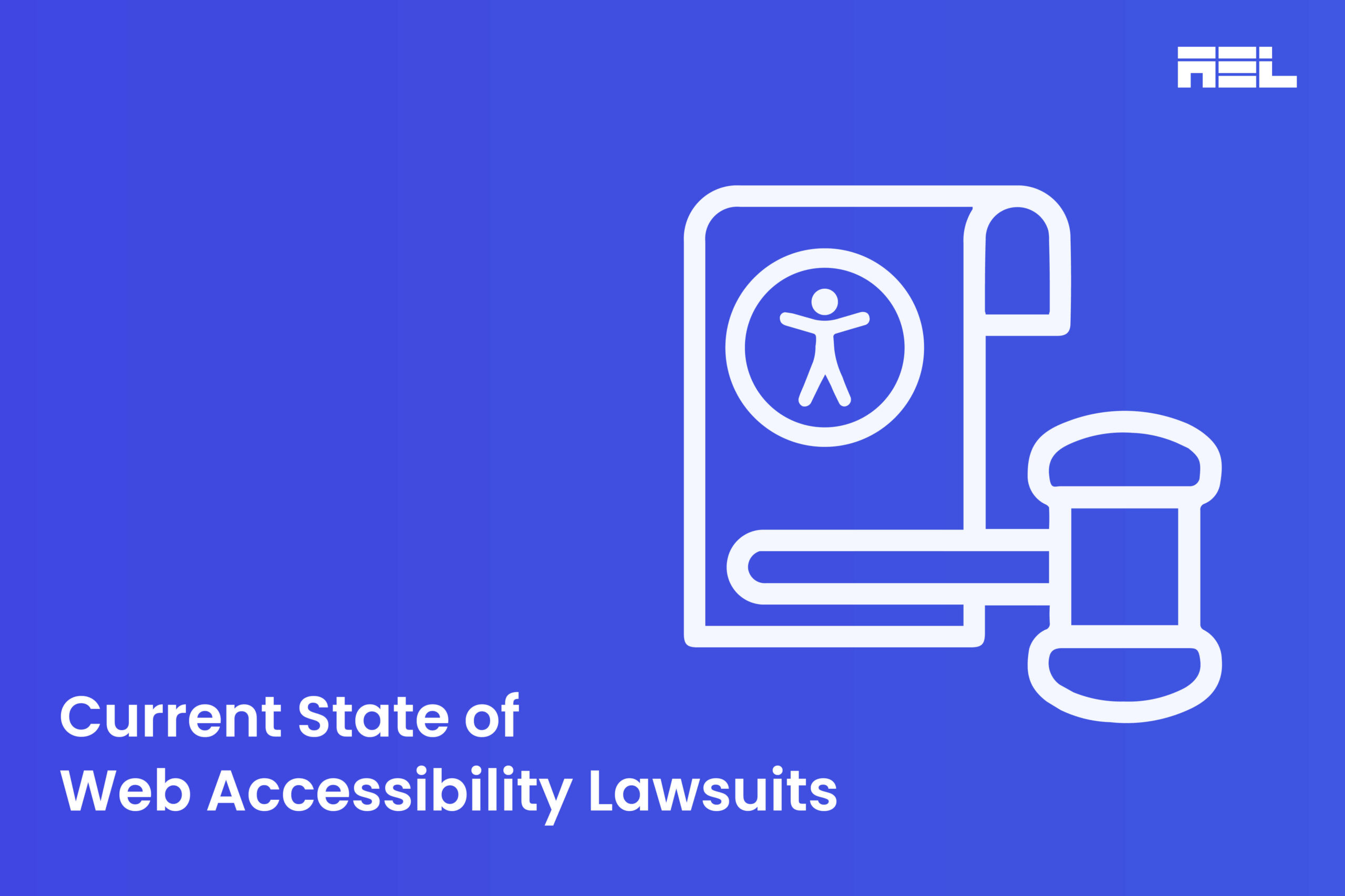For companies, website designers, and site owners, online accessibility has become increasingly vital. Ensuring that people with disabilities can navigate the web without hindrance is the primary objective. This guide provides an overview of the current state of web accessibility lawsuits focusing on the current trends, a brief about how accessibility non-compliance affects industries and a few steps to ensure accessibility of your website.
ADA is a legal framework in the United States that mandates equal access for individuals with disabilities in various areas, including digital spaces. On the other hand WCAG provides specific technical guidelines and standards for making web content more accessible to people with disabilities. The guidelines include techniques to remove barriers to the web for users dealing with blindness, poor vision, deafness, loss of hearing, restricted mobility, speech difficulties, photosensitivity, and other impairments.
The first release of WCAG was the 2.0 standards published in 2008. Since then there have been two iterations of the standards with WCAG 2.1 being released in 2018, and the most recent update to WCAG 2.2 in late 2023.
The majority of lawsuits filed in federal court in the United States involve Title III claims under the Americans with Disabilities Act. The Unruh Act in California and the New York State/City Human Rights Law in New York are two examples of municipal anti-discrimination legislation that are used to bring claims in state court that are similar to the ADA.
Table of Contents
All Legal Background for Accessibility
The Americans with Disabilities Act (ADA) was enacted in 1990 to prevent discrimination against individuals with disabilities in all areas of public life.
The DOJ has emphasized that the ADA applies to web content since 1996, however, failing to specify which WCAG guidelines should be adhered to. Most recently, the DOJ released guidance underscored by recent settlements that reference WCAG 2.1 Level AA as a standard for ensuring accessibility for state and local government organizations. At the time of publishing this article, there is no DOJ guidance for the private sector. (source: ADA.gov).
The March 8, 2024 amendment to the Americans with Disabilities Act (ADA) Title II mandates state and local entities to adhere to Web Content Accessibility Guidelines (WCAG) 2.1 Levels A and AA for digital content.
The update, applicable to all digital communications in the public sector, provides a grace period of two to three years for compliance. Oversight by the Department of Justice ensures enforcement through legal channels. This shift not only improves access to public services but also sets a precedent for digital inclusivity. It may influence ADA Title III, prompting private enterprises to proactively adjust strategies for compliance and mitigate legal risks.
Latest Trends in Web Accessibility Lawsuits

In recent years, web accessibility lawsuits have become more common, as more users with disabilities assert their rights under the ADA. In 2023, over 4600 ADA lawsuits were filed in the United States with New York state leading followed by Florida and California. Up to 80+ lawsuits are filed weekly in 2024.
Trends in the Year 2024
As states expand digital accessibility laws, businesses face increasing obligations. Several states extend regulations beyond government entities to commercial domains. California’s Unruh Act and New York’s Human Rights and Civil Rights laws exemplify this trend, imposing obligations on websites serving residents.
The 2024 ADA Title II update mandates WCAG compliance for state and municipal websites by 2026/27, emphasizing universal accessibility across public sectors.
Industries being impacted the most by Web Accessibility Lawsuits
While adherence to ADA standards is essential across all websites, certain industries face heightened scrutiny in this regard. Recognizing these trends becomes imperative for businesses to minimize the threat of legal action and improve accessibility for all users.
They include:
- E-Commerce Sector faces obstacles with a rise in lawsuits impacting online shopping;
- Restaurant and Food Industry: ADA compliance extends to websites and digital menus, with notable lawsuits shaping accessibility standards;
- Education Sector experiences heightened scrutiny regarding ADA compliance in online learning platforms;
- Travel and Hospitality Domain encounters challenges in offering accessible experiences online, impacting user engagement and potentially leading to legal consequences;
- Healthcare Field, digital accessibility is crucial, as recent lawsuits underscore the need for all users to access medical information;
- Automotive Industry grapples with digital accessibility issues, necessitating attention to avoid legal repercussions.
Steps to Ensure Web Accessibility Compliance
- Conduct a manual Accessibility Audit: Evaluate your current website against the latest WCAG standards replicating the navigation of how a disabled user would experience the site. If you are unsure which standards to follow, reach out to our experts for guidance.
- Implement Required Changes: Address any issues identified in the audit and update your website as soon as possible. Fixes can be made either through content or at the code level.
- Provide Ongoing Training: Ensure your development and content teams are trained on accessibility best practices.
- Engage Users with Disabilities: Get direct feedback from users with disabilities to identify and fix real-world usage issues.
Conclusion
Ensuring digital content requires prioritizing web accessibility. As legal actions related to web accessibility increase, companies must monitor their websites to adhere to relevant accessibility laws. Businesses can avoid potential legal entanglements by embracing the latest WCAG recommendations and ADA requirements. Contact us today at info@aeldata.com to ensure your website complies with regulations and mitigate legal risk.



